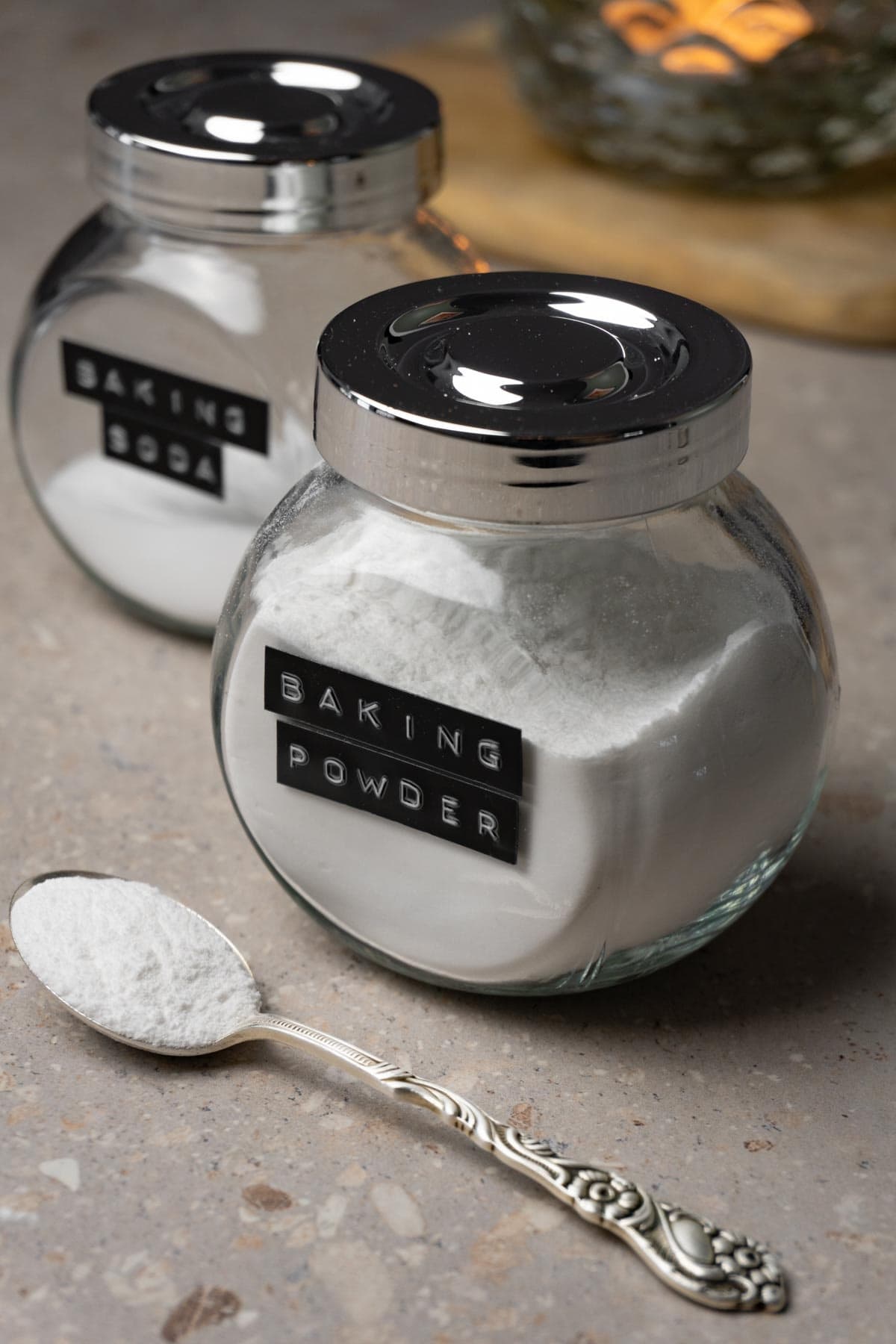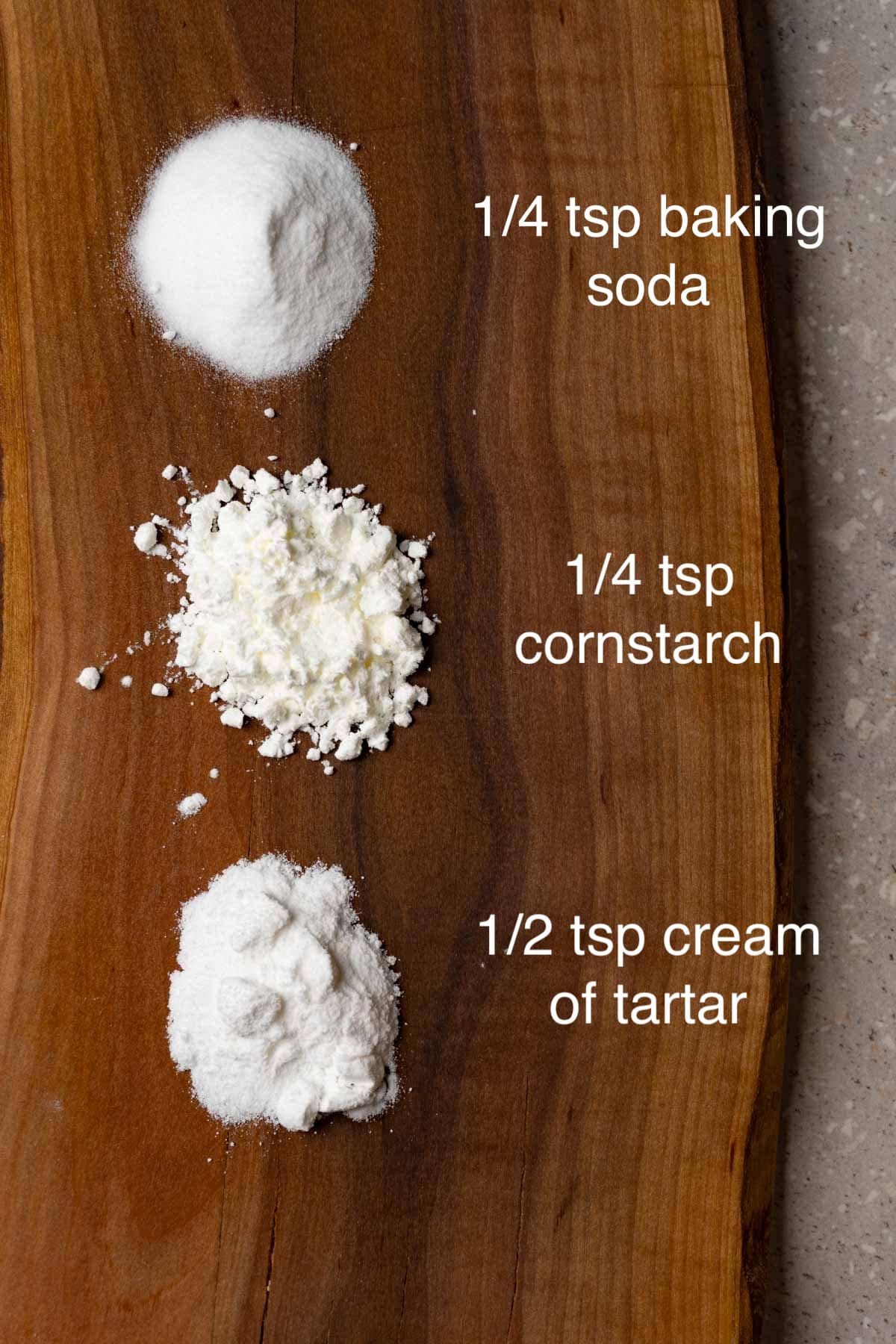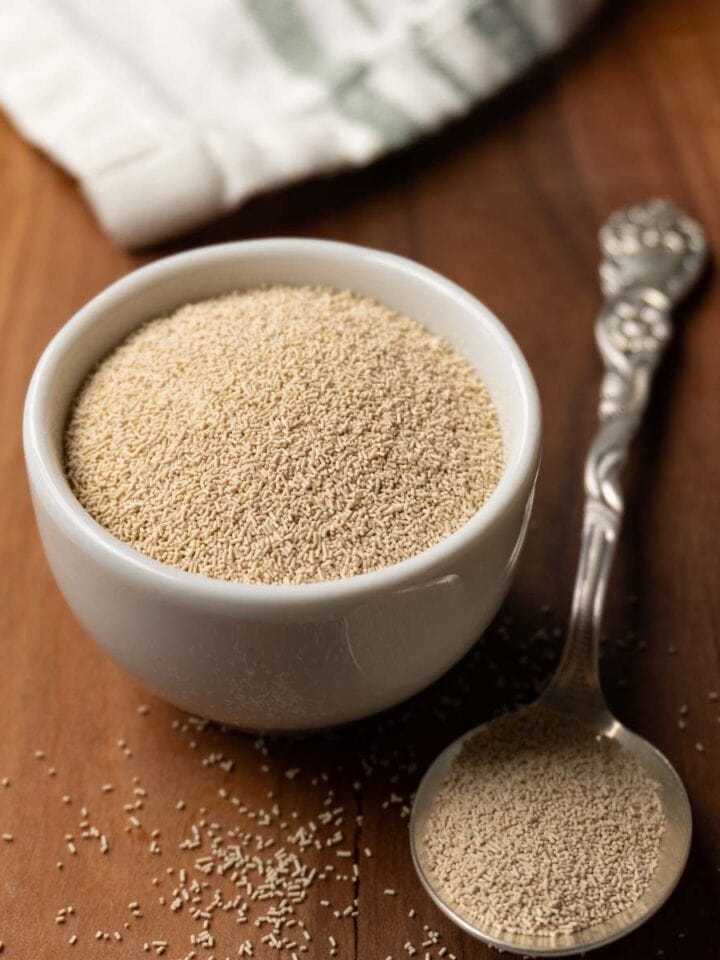Despite looking identical, baking powder and baking soda are two different leavening agents that are used in baking. Learn what sets them apart and when to use each one!

Jump to:
- What is baking powder and when to use it
- Single-acting vs Double-acting baking powder
- What is baking soda and when to use it
- Baking powder vs baking soda
- You can make your own baking powder
- Why do some recipes call for both
- Flour to baking powder and baking soda ratio
- Baking soda substitutes
- Baking powder substitutes
- FAQ
What is baking powder and when to use it
Baking powder is a leavening agent used in baking to help baked goods rise, creating a soft and tender texture. It typically consists of baking soda and an acid component (such as cream of tartar, although other acids can be used), along with a stabilizing agent like cornstarch, which extends shelf life by keeping the mixture dry and clump-free. When mixed with liquid and exposed to heat, baking powder releases carbon dioxide, causing the mixture to expand and rise. Baking powder is mostly used in recipes that do not contain acidic ingredients, as it already contains both the acid and base needed for leavening. It is often used in cakes, muffins, pancakes, and quick breads to achieve a tender crumb and good rise.
Single-acting vs Double-acting baking powder
Single-acting baking powder releases all of its gas when it comes into contact with moisture and is typically used in recipes that require immediate baking. On the other hand, we have double-acting baking powder, which releases some gas upon mixing with wet ingredients and the rest during baking when exposed to heat. This delayed release makes double-acting baking powder more versatile, as it allows for adjustments in baking time and provides a longer leavening action. Nowadays, all baking powders you see in stores are double-acting ones, and single-acting baking powders are available only for commercial use.
What is baking soda and when to use it
Also known as sodium bicarbonate or bicarbonate of soda, baking soda is a chemical compound primarily used as a leavening agent in baking. It reacts with acids in the presence of moisture and breaks down, releasing carbon dioxide that creates volume and a fluffy texture in baked goods. Additionally, baking soda can act as a neutralizer for acidic ingredients, balancing flavors in recipes. However, without acidic ingredients, baking soda can leave a chemical aftertaste.
As mentioned earlier, baking soda reacts with acids, so the best way to use it is in recipes where acidic ingredients such as kefir, honey, yogurt, lemon juice, vinegar, etc., are present. For example, if you want to bake something like Honey cake, you would need to use baking soda instead of baking powder to create tender cake layers.
However, baking soda can be used in other situations as well. A small amount of it in your cookies will weaken the gluten, creating more spread and caramelization, resulting in chewier or crispier cookies, depending on the recipe.
Baking powder vs baking soda
In summary, the main difference between baking powder and baking soda lies in their composition and how they function in baking. Baking soda is a single-ingredient chemical compound. It requires an acidic ingredient, such as vinegar or lemon juice, to react and produce carbon dioxide, which causes dough or batter to rise. On the other hand, baking powder is a mixture of baking soda, an acidic ingredient (such as cream of tartar), and sometimes a starch to prevent clumping. Baking powder already contains its acidic component, so it can react with moisture and produce carbon dioxide on its own when mixed into dough or batter.
You can make your own baking powder
If you ever find yourself running out of baking powder in the middle of baking, and you can't easily swap it with baking soda (which you may have in your pantry) along with cream of tartar and cornstarch, take a deep breath—because I have a solution to your problem. With the right ratio of these three ingredients, you can whip up homemade baking powder in a matter of seconds.
All you need to do is combine ¼ teaspoon of baking soda with ¼ teaspoon of cornstarch and ½ teaspoon of cream of tartar. Here you have it - 1 teaspoon of homemade baking powder. Now you can use it to create delicious cakes, muffins, and cupcakes.

Why do some recipes call for both
Picture this: you're following a recipe that's packed with acidic ingredients like yogurt or buttermilk. In such cases, relying solely on baking powder may not provide enough lift for your baked goods. That's because baking powder will decompose too quickly in this case, leaving your treats disappointingly flat, with a dense texture. By incorporating a bit of baking soda alongside the baking powder, you're ensuring your desserts get the perfect rise.
Another instance where you might see both leavening agents together is when the recipe developer aims to achieve a specific amount of browning and flavor balance. Baked goods made with baking soda tend to have more browning and mellower flavors.
Flour to baking powder and baking soda ratio
As a general rule, you should use one teaspoon of baking powder for each cup (125g) of flour. As for the baking soda, you will need only ¼ teaspoon to leaven one cup of flour.
Baking soda substitutes
Baking ammonia – Baking ammonia, also known as ammonium bicarbonate, is an alternative to baking soda when making crisp crackers and cookies (The final product should have a low moisture content!). Like baking soda, baking ammonia releases carbon dioxide gas when heated, helping baked goods rise. However, baking ammonia has a strong odor that fades during the baking process. It is commonly used in traditional European recipes, such as cookies and biscuits, to achieve a crisp texture. Baking ammonia should not be used in cake recipes as it can make the cake taste and smell unpleasant.
Baking powder substitutes
Homemade baking powder – This homemade alternative provides the leavening power needed for your recipes and can be used as a 1:1 replacement for commercial baking powder. However, keep in mind that homemade baking powder should be used immediately, as it may lose its potency over time.
Self-rising flour – Self-rising flour is another convenient substitute for baking powder. This flour is pre-mixed with baking powder making it a convenient option for recipes that call for both flour and leavening agents.
FAQ
Both baking powder and baking soda should be stored in airtight containers in a cool, dry place away from heat and moisture. Exposure to moisture or humidity can cause them to clump or lose potency. It's best to keep them in their original packaging or transfer them to sealed containers to maintain freshness.
To check the freshness of baking soda, you can perform a simple test. Place a small amount of baking soda in a bowl and add a few drops of vinegar or lemon juice. If the baking soda fizzes vigorously, it's still active and fresh. For baking powder, you can perform a similar test, but using hot water instead of vinegar.


Leave a comment